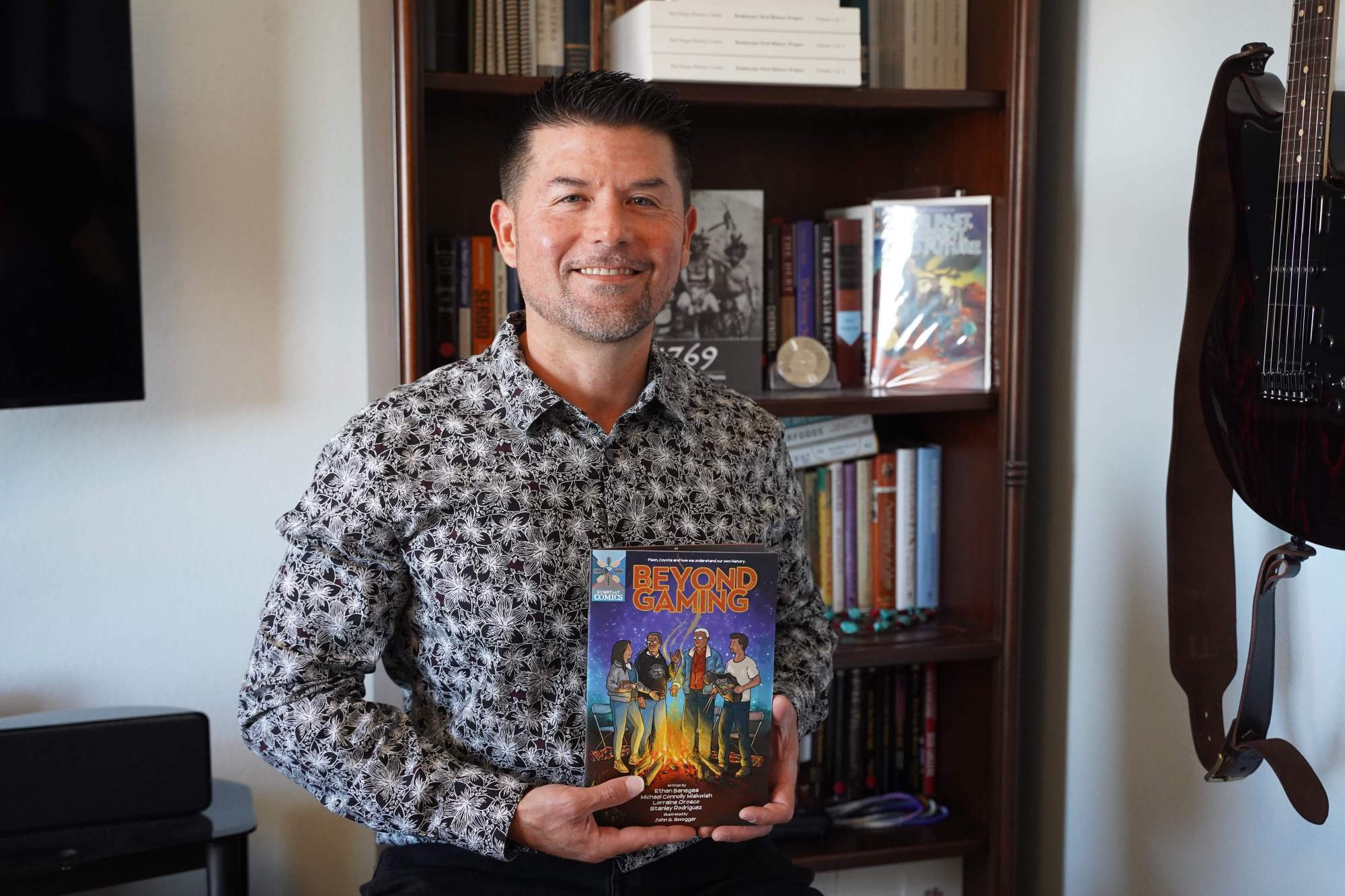A Personal Past for Kumeyaay Historian and Professor

A Journey of Identity and Empowerment
Ethan Banegas's journey as a historian began with a deep personal quest to uncover the history of his family, particularly on his father’s side. As a descendant of the Kumeyaay, Luiseño/Payómkawichum, and Cupeño/ Kuupangaxwichem bands of Native Americans, he found that exploring his heritage revealed more than just names and dates. It offered him insight into the historical trauma that shaped his family and community.
“I wanted to learn the Banegas family lineage, and I learned way more than I expected,” Banegas shared. “I know part of my father’s family history, way more than most people. I can literally trace my family history all the way back to the mission period and Father (Junipero) Serra. … For me, this is personal. One of the things I wanted to do is trace the historical trauma of my family from the mission period to the present, and it explained a lot of the reasons why the reservation was the way it was, why I struggled so much. It’s been therapeutic, it’s been a force of empowerment because that awareness and that truth being realized is like, ‘Oh, now it all makes sense.’ So, tracing my personal story was very therapeutic, and definitely kind of sad, too.”
Growing up on the Barona reservation in San Diego County, Banegas spent about 40% of his time there with his dad after his parents separated when he was a kid. He described his childhood as challenging, saying that he didn’t really like school and didn’t fit in. However, education became a turning point for him, leading him to his calling—history.
Banegas has earned degrees in history from the University of San Diego and is co-owner of Kumeyaay.com, a historian for the San Diego History Center, and has conducted several community-based research projects, including the Kumeyaay Oral History Project and the Kumeyaay Visual Storytelling Project. He recently published two comic books, “Beyond Gaming” and “Our Past, Present, and Future,” which share the history of the Kumeyaay people from their perspective.
The Power of Identity and Diversity
At 45, Banegas is also a professor at San Diego State University and lives in the La Mesa/El Cajon area with his wife, Celena, and their children Koa and Aakylee. His work is driven by a desire to shift the imbalance of historical trauma to the truth, healing, and positivity that comes from telling their own stories.
Identity plays a significant role in his life and work. He recalls not fitting in on the reservation or in the city, feeling caught between two worlds. This duality, however, became a source of strength. “It’s funny because I say my curse became my blessing because it’s because I was in the middle that I was able to accomplish all these things and to make sense of all that pain and suffering, and make something beautiful out of it, which really reconciled that identity stuff.”
Banegas credits his ability to adapt and connect with others to the diversity he experienced in La Mesa and El Cajon. “I love the diversity. I love that we have Chaldean communities, there’s Somalian communities, there’s all different races—Mexican, Asian, African American. El Cajon is the most diverse of all in San Diego County. I really believe that’s how I got some of, I call it power, in traveling because it felt like having that ability to adapt and just be cool with anybody.”
Voices of the Kumeyaay Elders
During his community-based research, Banegas interviewed 33 elders from 13 different reservations, capturing 56 hours of high-definition footage and 1,200 pages of transcripts. These interviews provided a wealth of data and insights into the diversity of opinion within the Kumeyaay community. “One thing I’ll suggest, and it’s the most important thing I got, is the diversity of opinion Native American people have. That is very hard to see when you’re reading a textbook or anything in media, so I always try to shine a light on the intense diversity of opinion and beliefs, religions, all that.”
Centering Indigenous Voices
For Banegas, developing projects that center the voices of Indigenous people is crucial. He believes that if no one in his generation documents their history, it will be lost. “The reason why it’s so important is because no one in my generation was doing it, and if I didn’t do it, or someone like me, it would have died, you know? That’s just a simple fact.” His work aims to preserve the stories of elders and ensure they are accessible to future generations.
Advice and Personal Reflections
When asked about the best advice he’s ever received, Banegas highlighted the importance of focusing on internal fulfillment rather than material gain. “The most important thing is to be working on your internal self. Not your material gain, your career, all that; that’s an empty road.”
He also shared that people might be surprised to learn about his extensive travels. “I’ve traveled a lot and I’ve been to a lot of different places for a long time. I was in Haiti for six weeks after the earthquake, I’ve lived in England, Spain, Mexico; Korea for a month. I’ve kind of been all over the world, not just visiting, but living.”
Ideal San Diego Weekend
Banegas describes his ideal San Diego weekend as one filled with family and nature. Recently, he enjoyed a day at the driving range and batting cage with his son, brother, nephew, and son’s friend, followed by a day in La Jolla where they swam and enjoyed the beach. “Just seeing my kids enjoy life, at the beach just swimming and being free. Just being with the people I love the most.”
Post a Comment for "A Personal Past for Kumeyaay Historian and Professor"
Post a Comment